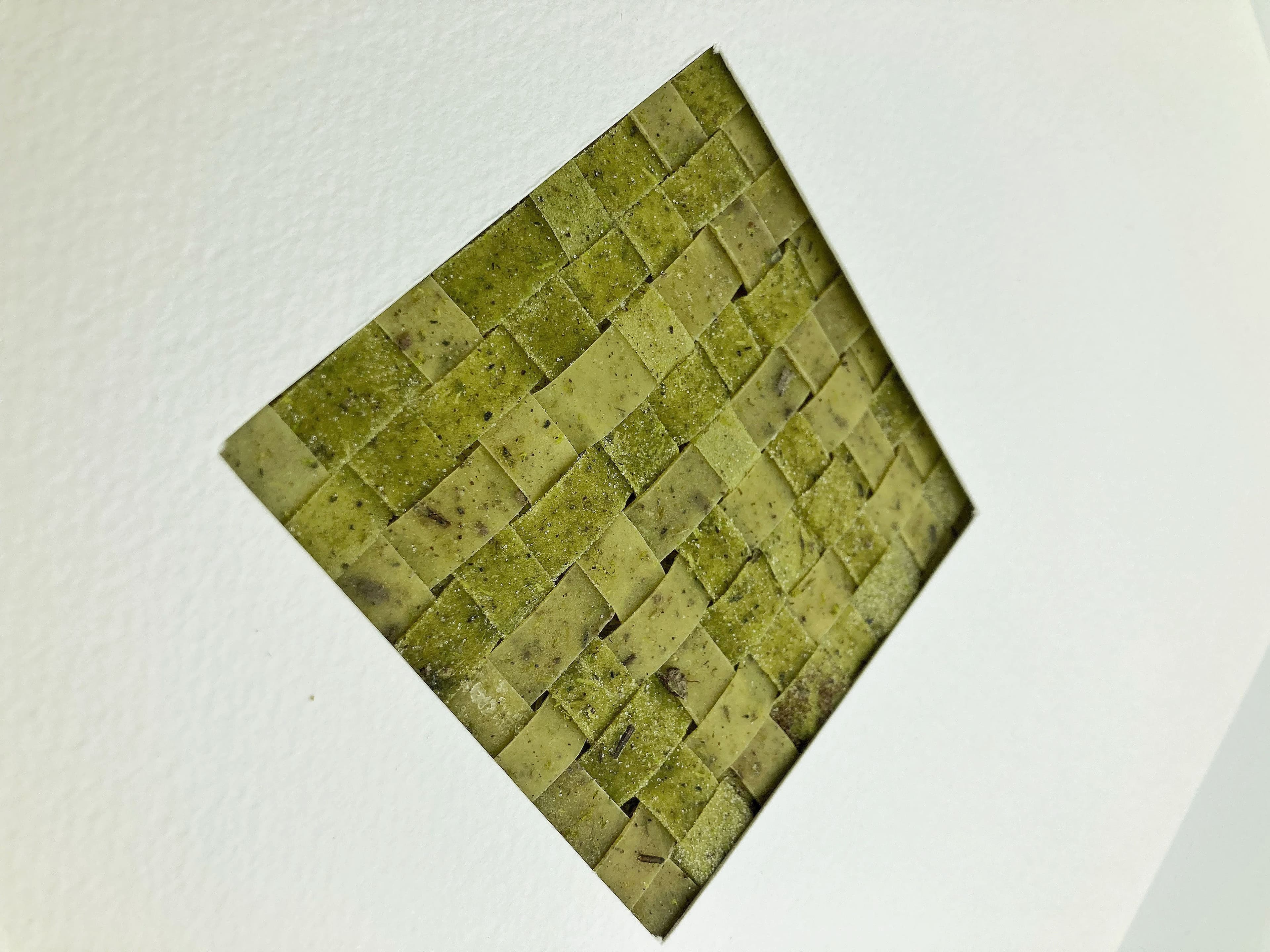Can you elaborate on the process of selecting bio-matter for your projects, especially in terms of its symbolic significance and functional properties in creating a "second skin”?
In my artistic practice, the material always takes center stage. I enjoy manipulating materials during the process of creating a piece. The material becomes imbued with meanings and symbols, communicating sensations. Artworks can be 'seen' not only with the eyes but also through the hands, through touch, and thus, by extension, with the skin.
In recent years, I have focused on searching for materials that come from organic sources. By creating bioplastics in my studio, I have been able to combine various elements of plant or animal origin to create membranes that resemble skin. Each membrane is unique, varying in terms of consistency, color, texture, and elasticity. For instance, I have experimented with biomaterials like honey, milk, tea, moss, human hair, algae, eggshells, soil, smog, and more. I constantly experiment and refine my technique to achieve increasingly complex artworks.
It's inspiring to think that my creations are filled with vital elements of diverse origins, symbolising our interconnectedness. In this network of connections, the skin acts as a conduit. Our skin serves as a psychological and physical barrier, protecting us while also facilitating communication with others. We can also perceive clothing as a second skin that communicates and provides protection.

In what ways do you believe your work contributes to the discourse on posthuman identities, particularly through the exploration of the skin as a boundary and medium?
Contemporary humanity is inherently nomadic and hyperconnected. We assimilate with new technologies, the inorganic world, nature, our environments, and other living beings that inhabit the Earth. We are hybrid beings in constant flux, changing our skin, form, gender, and identity. We have all become posthumans, and denying this reality is inconceivable.
In this line of thinking, there is a focus on the relationship between humans and machines, between the human and the non-human. It transcends the historical perspective of Humanism, which was based on hierarchical constructs that declared the white, straight, normative man as the superior being. The very concept of identity is challenged by posthumanists, dismantling all forms of social and biological superiority. In this post-colonial vision, feminist and Queer movements assert their rights to identity.
As an artist, I strive to give a voice to all those marginalised groups who fight daily for their rights against the forces of advanced capitalism. It is necessary to dismantle all forms of dichotomy: good/bad, healthy/sick, beautiful/ugly, straight/gay, man/woman, natural/artificial, and so on. By embracing our diversity and uniqueness within a hybrid and ever-changing body-container, while staying connected to all living beings, we must protect one another and nature. It is through organic materials that these concepts take shape and are molded. Life, encapsulated in biomaterials, represents the pure essence of artwork.
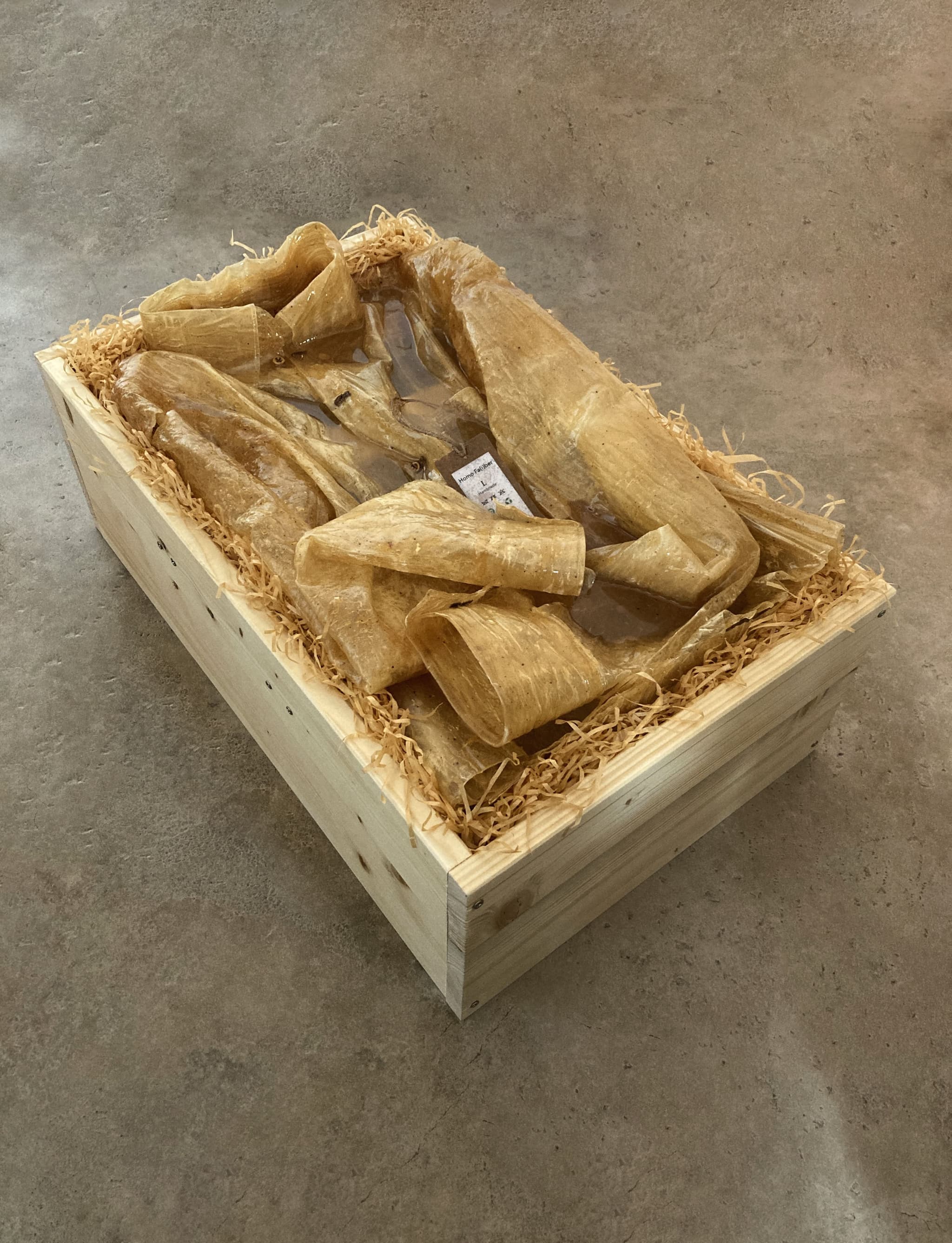
Could you discuss a project that exemplified the challenge of hybridising organic and inorganic materials, and how you addressed these challenges?
The inorganic elements in my artworks take the form of metals, glass, plexiglass, resin, or synthetic yarns. One fascinating challenge I encountered was the fusion of two contrasting materials: plant-based bioplastic and epoxy resin.
After numerous attempts, I eventually discovered the right proportion to create a novel, rock-hard material with skin-like tones. Achieving the solidification of the material to craft three-dimensional sculptures proved to be highly complex. Even slight variations in the quantity of an element or the moisture level could render the material unworkable. From this process emerged the artwork titled "Mother," symbolising a regenerative organism, a matrix of fluids, cells, and life resembling a mother's womb.
Within my sculpture, the organic and inorganic elements merge and hybridise, becoming conduits for creation and exchange, gestation and transformation. "Mother" represents, to me, a deity-cyborg, embodying the fusion of divine and technological aspects.
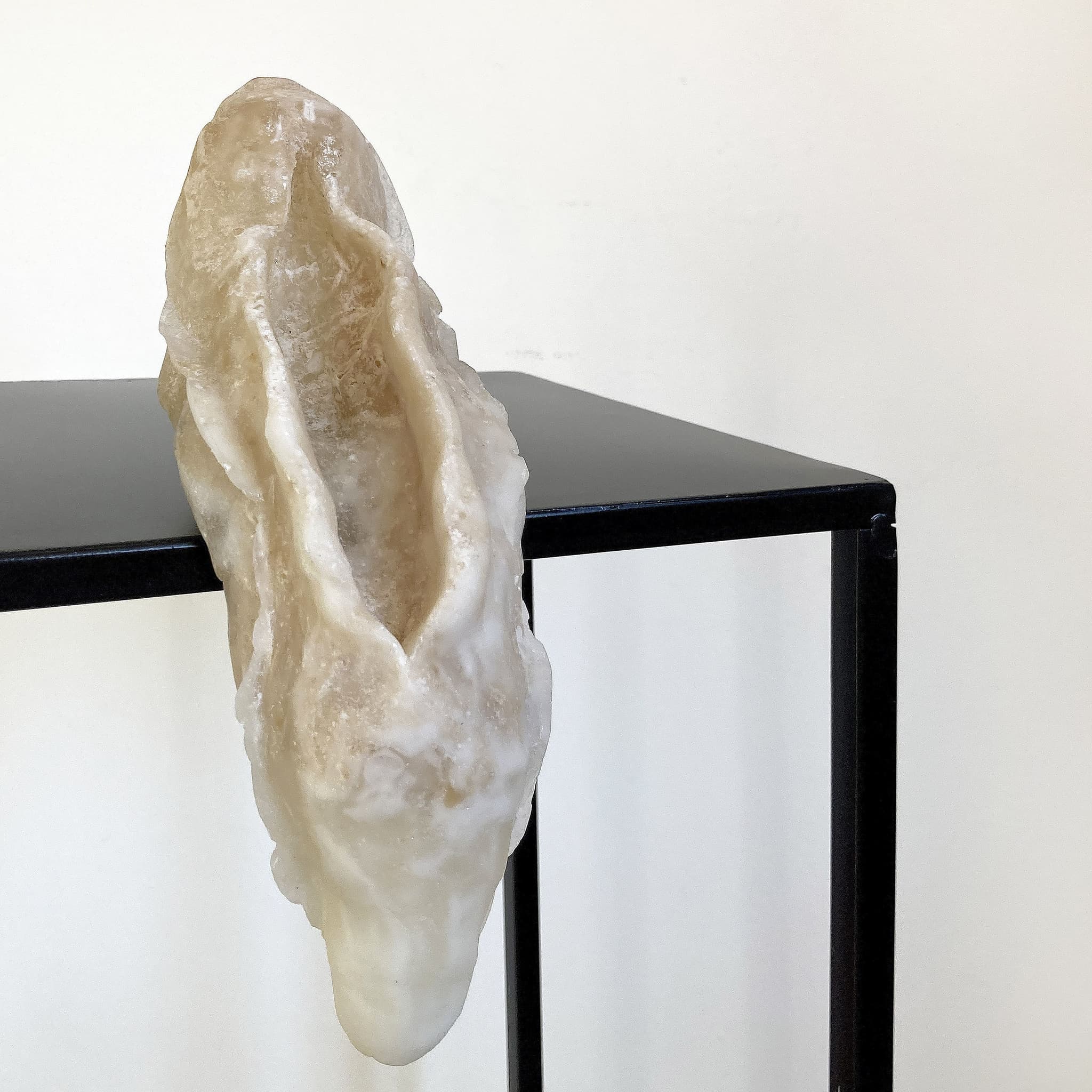
How does your artistic exploration of sensorial relationships impact the viewer's experience of your installations or pieces, particularly in terms of engaging with the concept of a "continuous flow”?
I strive to provide hints to the viewer by playing with words, particularly through the titles of my artworks. The combination of words and the visual experience enables communication with the artwork, fostering a sensory relationship. Sight, touch, smell, and other senses stimulate dialogue and create an immersive experience that flows continuously. These experiences leave an imprint in memory, allowing them to be internalized and matured over time.
Once again, we can employ the metaphor of skin to illustrate this ongoing exchange between the artwork and its audience. "By the skin," we encounter a multitude of sensations, some pleasant while others may be unsettling or even repulsive. Through these experiences, our perspective on things can change, but as artists, we have the ability to bring these experiences into focus and make them more comprehensible to others.
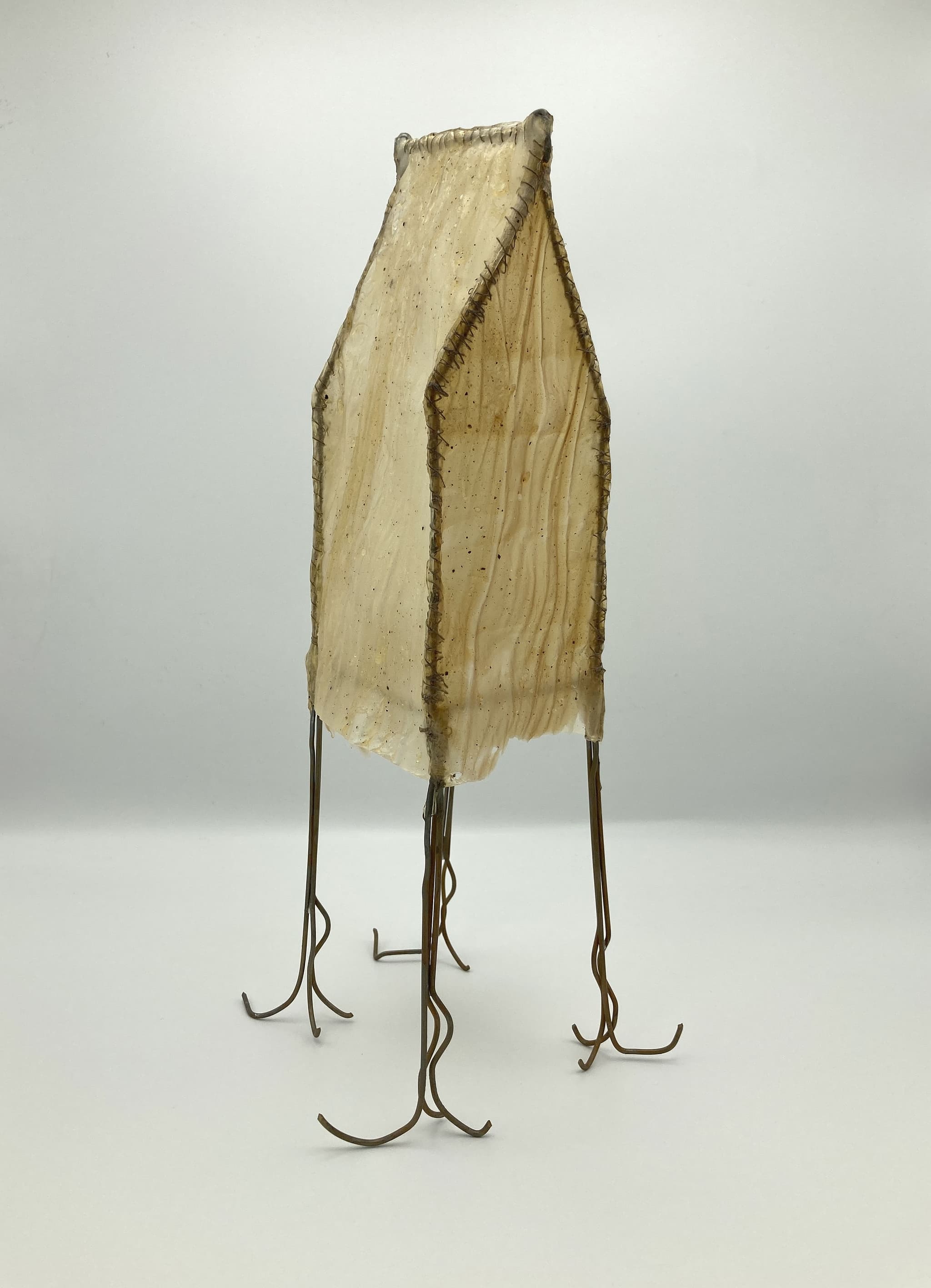
What role does philosophy play in your artistic practice, especially concerning concepts like habitus and identity within your creations?
Philosophy is an integral part of understanding existence, the mind, and language. It is something intrinsic that resonates with the artist, becoming a part of their research. Every artist draws nourishment from knowledge in their quest for answers within their artistic practice.
By saying this, I don't imply that an artist is also a philosopher, or vice versa, but rather that both share a hunger and sensitivity towards the things that shape the world. Many contemporary philosophers, such as Donna Haraway, Rosi Braidotti, Silvia Federici, Umberto Galimberti, and Paul B. Preciado, have sparked a strong interest in me regarding the individual and their relationship with their environment.
In my essay titled "Abito", published in 2022 by Giazira Scritture, I attempted to "weave the threads" between humanity and the world. I began with the Latin word "Habitus," which acts as a container and is connected to "Abito" ("habit") in Italian, which is synonymous with both clothing and dwelling. Thus, it encompasses inhabiting a space, a body, and an environment.
The word "habit" also implies a relationship. Equally important is the concept of habitus within the biological realm, indicating the aggregate of dominant characteristics of an animal or plant organism. Habitus is intertwined with one's identity, enveloped in flesh and fluids, necessitating physical and material support from the body, allowing us to extend our connections to other living beings. My artworks are my habitus, representing my embodiment of these concepts.
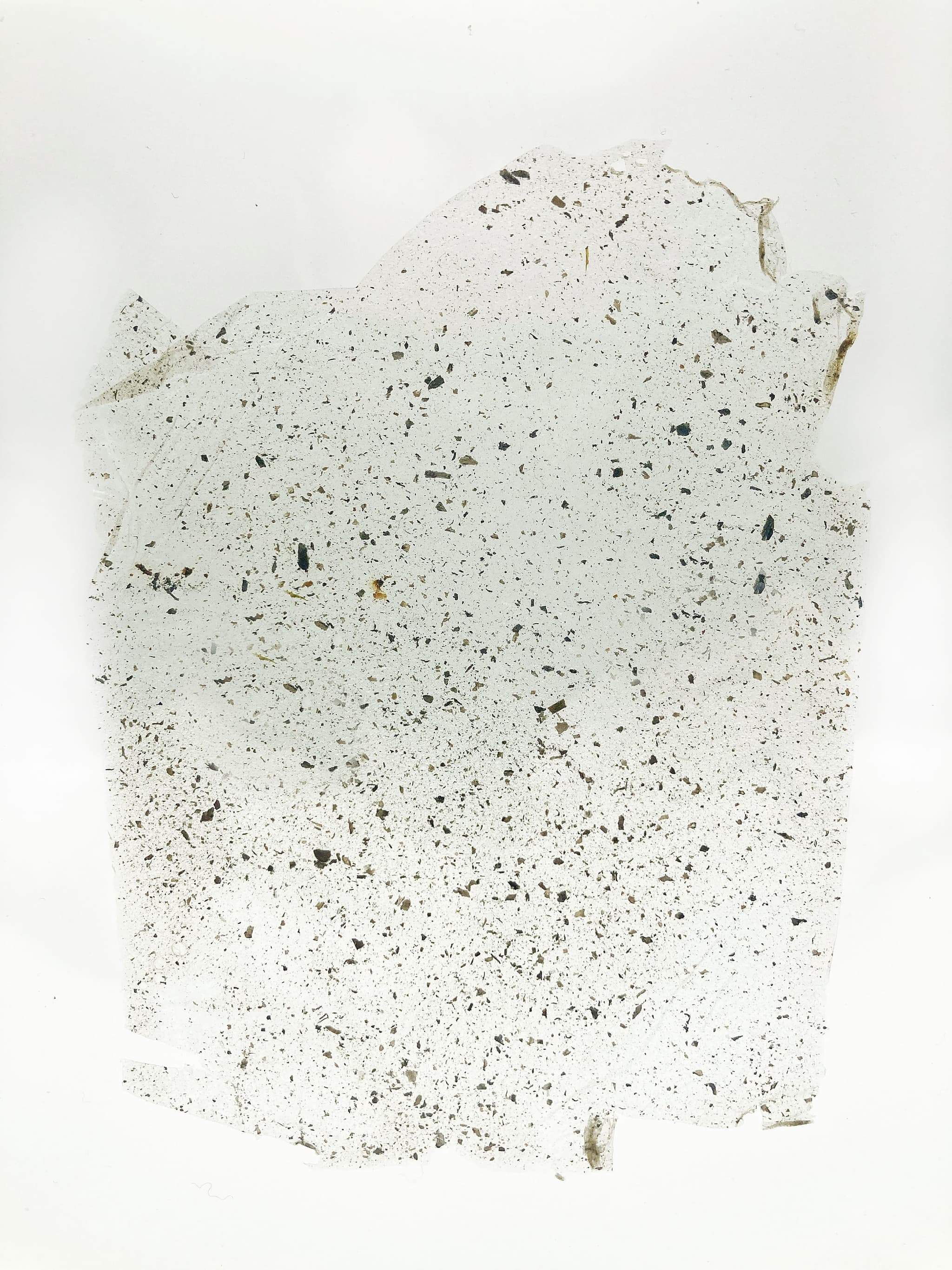
Could you share insights into your research methodology when integrating diverse fields such as ecology and anthropology into your art?
Before embarking on a new project, I engage in extensive reading and writing. Even before translating ideas onto paper through drawing, I find it essential to synthesise them using words. My artworks are born from this process of research and writing. I then analyse and manipulate materials to give life to these concepts. Contemporary philosophy captivates me because it encompasses diverse fields of knowledge, including ecology and anthropology.
The climate crisis, caused by capitalism and human actions, has rendered our planet inhospitable. How can we expect to value and protect our bodies and identities without first learning to care for Earth? Toxic substances and waste seep into our bodies, bloodstream, and cells. Everything we consume is contaminated. It is urgent that we reevaluate our practices and design new environmentally sustainable systems and materials. There is still much for us to learn. We must act like mushrooms, which play a vital role in ecological systems by breaking down organic matter and promoting regeneration.
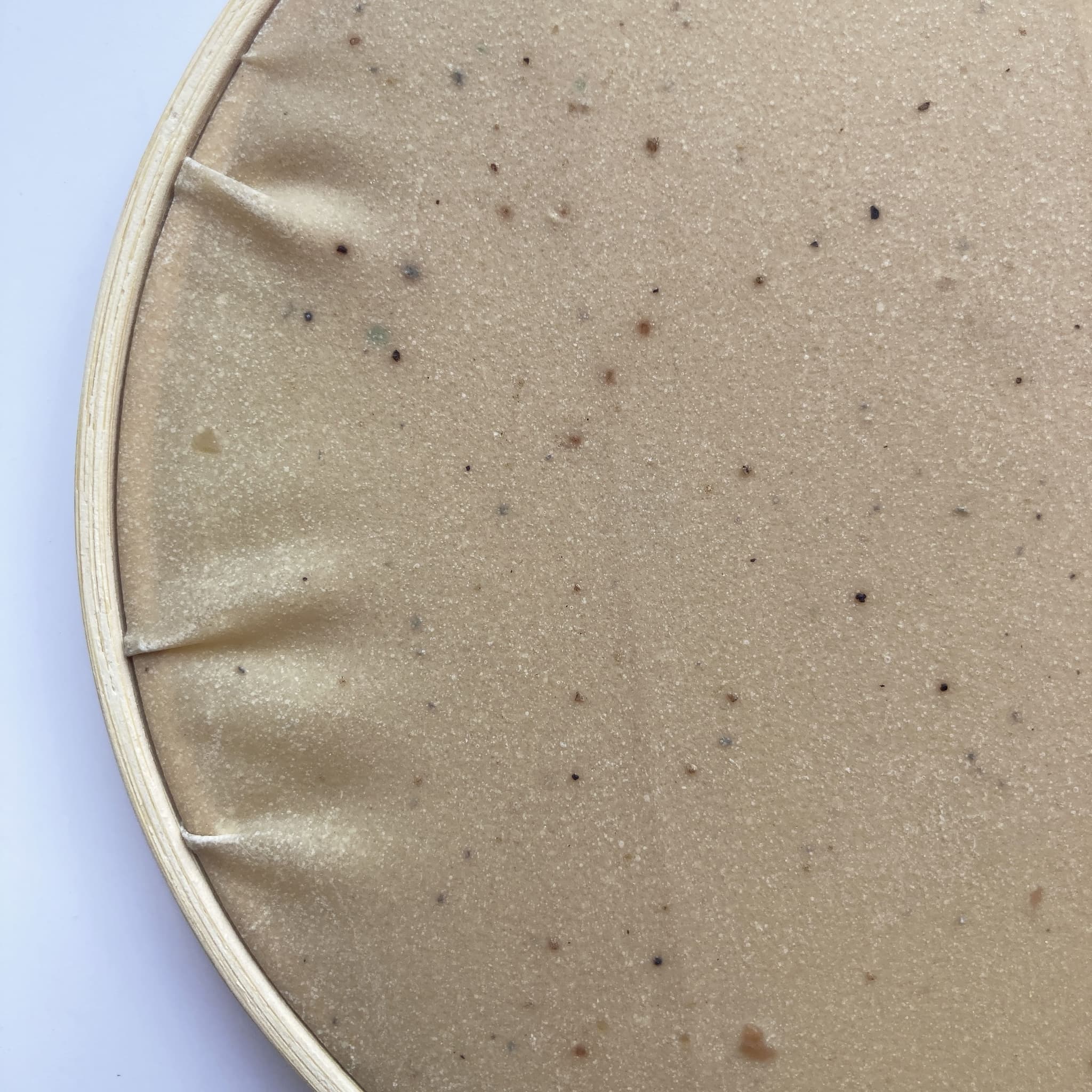
Looking towards the future, how do you see your work evolving in response to emerging trends in materials science and socio-ecological concerns?
My research revolves around the utilisation of biomaterials derived from animals, plants, and microbes. The decision to employ Materials 2.0 not only affects the artistic process but also has ethical implications for the user. I have faith in the younger generations, who are increasingly attuned to climate and identity concerns. It is crucial to engage people of all ages in this shift in perspective. I endeavor to impart my knowledge with passion to my students at the Academy of Fine Arts, as they are the ones entrusted with preserving our habitus, our way of being in the world.
